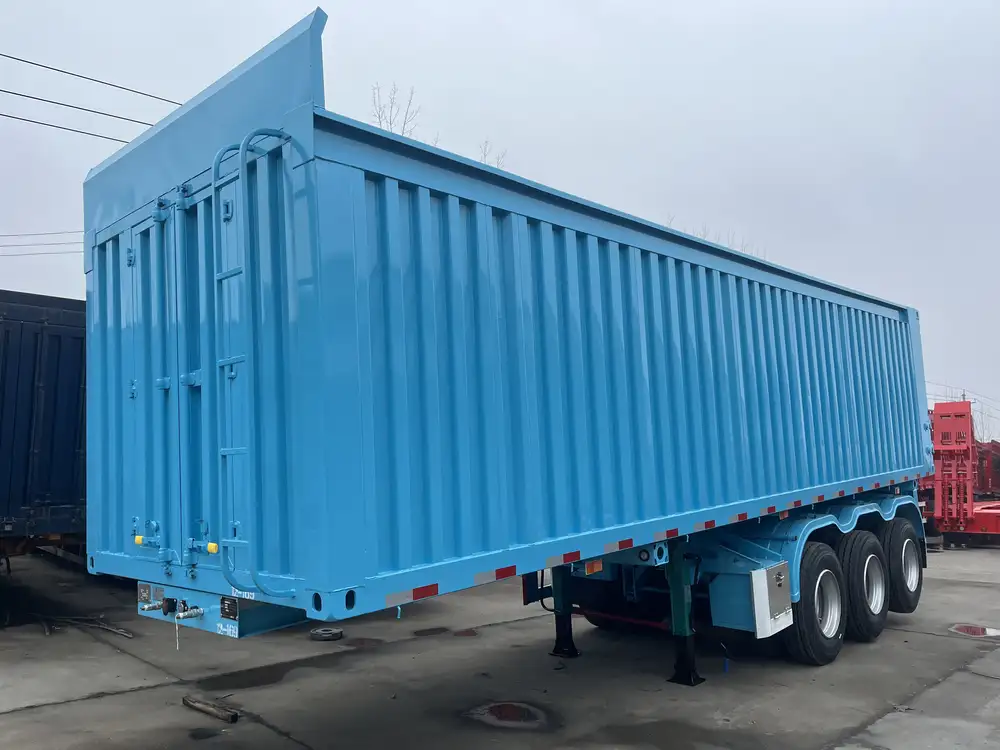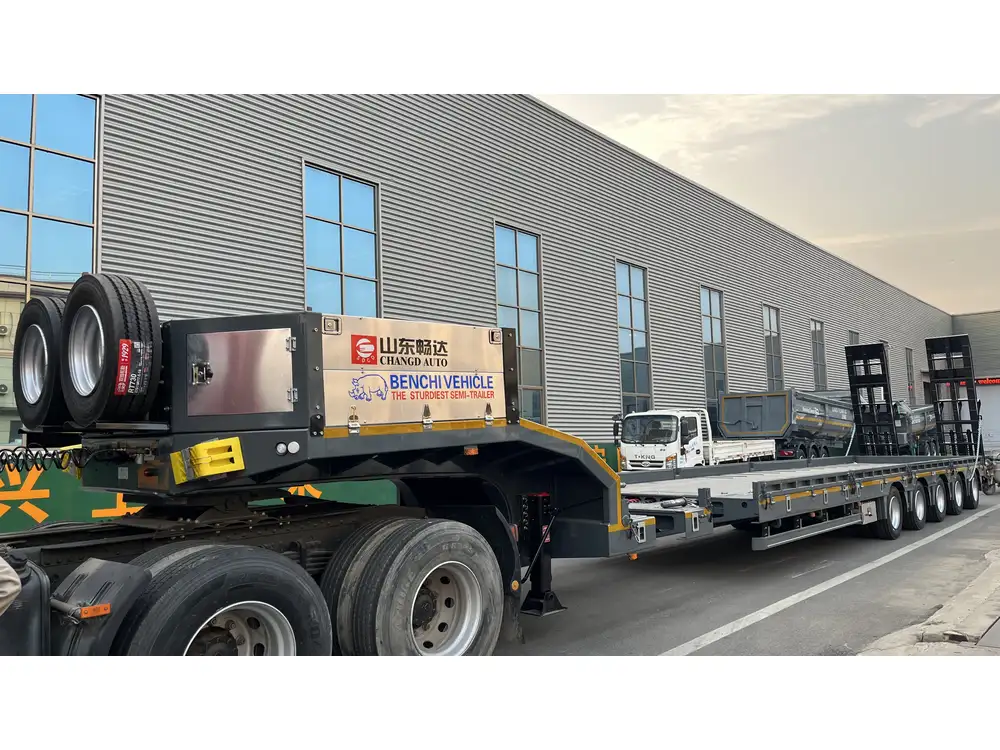When it comes to transporting oversized freight, understanding the height limitations of flatbed trailers is crucial for ensuring compliance with regulations and avoiding costly penalties. This article will delve into the technical specifications, legal requirements, and best practices for transporting tall loads on flatbed trailers. By the end, you’ll have a comprehensive understanding of how to navigate these complexities while maximizing safety and operational efficiency.
Understanding Flatbed Trailers
What is a Flatbed Trailer?
Flatbed trailers are an essential component of the trucking industry, designed for transporting large and heavy loads that do not fit within the confines of traditional enclosed trailers. They feature a flat, open deck that allows for easy loading and unloading from all sides. This design is particularly advantageous for various industries, including construction, manufacturing, and logistics.

Types of Flatbed Trailers
There are several types of flatbed trailers, each with its specifications and capabilities regarding load height:
| Trailer Type | Description | Typical Height Limit |
|---|---|---|
| Standard Flatbed | Basic design for general cargo | 13.5 feet (162 inches) |
| Step Deck (or Drop Deck) | Lower deck for increased height allowance | 10.5 feet (126 inches) |
| Double Drop Deck | Two drops for optimal height clearance | 9.5 feet (114 inches) |
| Lowboy | Specialized for heavy and tall equipment | 12 feet (144 inches) |
Height Restrictions
State and Federal Regulations
Regulations regarding the maximum height of loads transported on flatbed trailers can vary significantly between states and federal jurisdictions. The Federal Highway Administration (FHWA) maintains a maximum height limit of 13.5 feet for vehicles traveling on the interstate system. However, local laws may impose stricter limitations, especially on certain roadways or in urban areas. Consequently, it is essential for operators to thoroughly research the specific requirements applicable to each route.

Local Permits and Overheight Loads
If your load exceeds the standard height restriction, you may need to acquire additional permits. These permits often stipulate conditions under which the transport may proceed, including route restrictions, travel times, and escort requirements. Working closely with state transportation agencies can streamline this process and ensure compliance.
Calculating Load Height
To determine how tall your load can be on a flatbed trailer, consider the following calculations and factors:
Measure the Height of the Load: Start by measuring the total height of the cargo from the ground, including any accessories or equipment that may protrude.
Trailer Height: Standard flatbed trailers typically have a deck height of approximately 3 feet. Add this height to your load measurement.
Calculate Total Height: Sum the height of the cargo and the trailer’s deck height. For example, if your cargo is 10 feet tall and the trailer deck height is 3 feet, the total height would be:
[ \text{Total Height} = \text{Load Height} + \text{Trailer Height} = 10 \, \text{ft} + 3 \, \text{ft} = 13 \, \text{ft} ]Consult Height Regulations: Compare your total height against state and federal regulations. If it exceeds 13.5 feet, you will require a permit for oversized loads.
Consider Safety Factors: Always account for additional safety factors, such as the potential for shifting during transport or potential obstacles like bridges, overpasses, and power lines.
Load Securing and Safety Measures

Importance of Securing Loads
Properly securing your cargo is not only a legal requirement but also a crucial safety measure. An unsecured load can shift during transit, posing risks to other drivers and potentially causing accidents.
Tie-Down Regulations
The Federal Motor Carrier Safety Administration (FMCSA) mandates that all loads must be secured with appropriate tie-downs. Here are key points to consider:
- Type of Tie-Downs: Various tie-downs are available, including chains, straps, and ropes. Choose based on the weight and dimensions of your load.
- Tie-Down Strength: Each tie-down device must be rated to withstand the weight of the load. The combined working load limit (WLL) of the tie-downs should equal at least half the weight of the cargo to be transported.
- Number of Tie-Downs: For flatbed loads, the FMCSA recommends a minimum of two tie-downs for cargo weighing up to 5,000 pounds, with additional ties required for heavier loads.
Safety Tips for Transporting Taller Loads
Pre-Route Inspection: Conduct a thorough inspection of the proposed route. Look for low bridges, overpasses, and tree branches that could affect your load’s clearance.
Use Spotters: If possible, have someone guide you when navigating tight areas or when aligning with loading/unloading docks.
Travel Timing: Consider traveling during off-peak hours to minimize risk and avoid heavy traffic, which can complicate maneuvers with oversized loads.
Escort Vehicles: For loads over a certain height, especially if permitting requirements specify, it may be necessary to use escort vehicles to enhance safety and ensure regulatory compliance.

Managing Oversized Loads
Designated Routes for Oversized Freight
When transporting oversized loads, it’s crucial to understand the designated routes available for such cargo:
- Open Highways and Interstate Systems: Generally, these routes accommodate larger vehicles, but checking height limits along the entire route is essential.
- Local Roads: Be cautious on local roads, which may have more stringent height and weight restrictions. Some areas might require you to avoid tall loads entirely.
Navigational Considerations
Flatbed trailer operators should invest in specialized route planning tools that account for height restrictions, weight limits, and road conditions. These tools can help in avoiding obstacles while optimizing transport efficiency.

Emergency Procedures
In the event that your load exceeds maximum height limits, or if you encounter unanticipated obstacles, having a plan in place is vital. Consider the following:
- Emergency Contacts: Keep a list of relevant contacts, such as local transportation authorities and tow services, in case of emergencies.
- Alternate Routes: Familiarize yourself with alternate pathways that can accommodate your cargo should your original route become impassable.
Final Thoughts
Navigating the complexities of transporting tall loads on flatbed trailers can be challenging. To ensure that you remain compliant with regulations and avoid potential pitfalls, it is fundamental to understand the specifications of your trailer, measure loads accurately, secure cargo properly, and plan travel routes meticulously.
Educating yourself about the intricate web of regulations and requirements is crucial for the successful transport of oversized freight. By adhering to safety standards and regulations, and by implementing best practices for load transport, you can effectively mitigate risks, enhance operational efficiency, and ultimately safeguard your business’s reputation.
By prioritizing these aspects, you can streamline your operations and focus on what’s truly important—delivering your loads safely and efficiently to their destinations.



